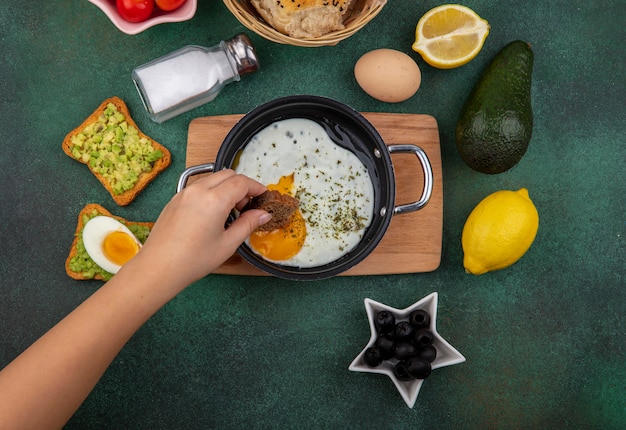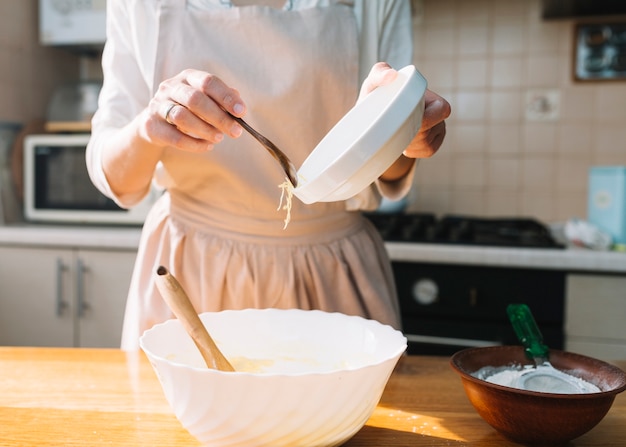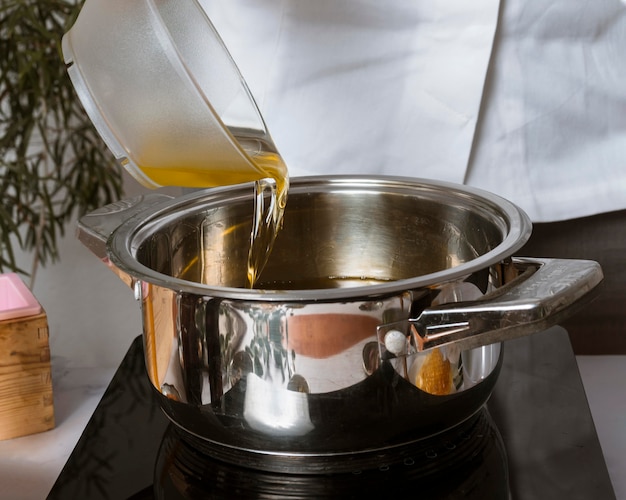I used to be a bit of a rice-cooking disaster. I'd either end up with mushy, sticky rice that resembled glue or dry, crumbly rice that resembled sand. It wasn't until I embraced the rice cooker that my rice-cooking woes became a distant memory. The rice cooker, my friends, is a culinary game-changer. It's like a magic box that transforms simple grains of rice into a fluffy, perfectly cooked masterpiece. And I'm here to share all the secrets I've learned along the way.
This comprehensive guide is for everyone, from rice cooker newbies to seasoned cooks who are looking to up their rice game. We'll cover everything from choosing the right rice cooker and understanding different rice varieties to mastering cooking techniques and even exploring creative ways to use your rice cooker beyond just rice. So grab your favourite mug, brew a cuppa, and let's dive into the world of rice cookers!
(Part 1) Choosing the Right Rice Cooker

Stepping into the rice cooker aisle can be overwhelming. Rows upon rows of shiny gadgets with buttons and functions that sound like they belong in a science lab. But fear not, choosing the right rice cooker is easier than it looks. Here's what to consider:
1. Size Matters
Are you cooking for a family of four or just yourself? Rice cookers come in various sizes, from compact 1-cup models that are perfect for single servings to larger 10-cup models that can feed a crowd. Choose a size that suits your typical cooking needs.
2. Features Galore
Some rice cookers are basic, while others are packed with features. Here's a rundown of some common features you'll encounter:
- Different Cooking Modes: Beyond the standard "white rice" setting, many rice cookers offer modes for brown rice, porridge, and even steaming vegetables. This expands your cooking possibilities beyond just rice.
- Keep-Warm Function: This is a lifesaver for those who don't eat their rice immediately. It keeps your rice warm and delicious until you're ready to dig in.
- Fuzzy Logic: This nifty feature uses sensors to adjust cooking time based on the type of rice and the amount of water. It ensures consistent results, even if you’re using different types of rice.
- Pressure Cooking: Some rice cookers double as pressure cookers, adding a whole new level of culinary versatility. You can cook everything from beans to meat in record time.
3. budget-friendly Choices
Rice cookers come in a range of prices, from budget-friendly models to high-end options. Decide how much you’re willing to spend, and then find a model with the features you need within your budget. Don't feel like you need the most expensive model to get great results. Even a basic model can make a world of difference in your kitchen.
My Personal Rice Cooker Journey
I started with a basic, budget-friendly rice cooker. It was a gamble, but it proved to be an excellent little workhorse. It cooked perfect rice consistently, and I loved it for years. Then, when I wanted to explore more advanced cooking options, I upgraded to a model with a few extra features. But I still cherish the memories of my first rice cooker – it truly revolutionized my cooking.
(Part 2) Understanding Rice Types: A Grain of Knowledge

Before we dive into the actual cooking, it's important to understand different rice types. Each type has its unique characteristics that affect its cooking time, texture, and flavour. Here's a guide to some of the most common types of rice:
1. White Rice: The Classic Choice
This is the most common type of rice, known for its mild flavour and fluffy texture. White rice has been polished, removing the bran and germ, which gives it a longer shelf life and a shorter cooking time. It's a versatile choice for various dishes.
2. Brown Rice: A whole grain Goodness
Brown rice is the whole grain version of white rice, retaining its bran and germ. This gives it a nutty flavour and a chewier texture. It takes longer to cook, typically around 45 minutes to an hour, but it’s a nutritious and delicious choice.
3. jasmine rice: Fragrant and Delicate
This fragrant rice is known for its long, slender grains and slightly sweet flavour. It's a popular choice for stir-fries, curries, and other Asian dishes. Its distinct aroma adds a touch of elegance to any meal.
4. basmati rice: A culinary gem
Another fragrant rice, Basmati is renowned for its long, slender grains and its ability to fluff up after cooking, creating a light and airy texture. It's a staple in Indian and Pakistani cuisine, and its delicate aroma is simply irresistible.
5. short grain rice: Sticky and Delicious
Short grain rice has plump, round grains that stick together when cooked, creating a cohesive texture perfect for sushi and other Japanese dishes. It's also used in puddings and other dishes that require a sticky consistency.
The beauty of rice cookers is that they often have different cooking settings for these various rice types. This allows you to achieve the perfect texture for each type of grain without any guesswork.
(Part 3) The Art of Measuring Rice: Precision is Key

One of the secrets to perfect rice is accurate measuring. I've found that using a measuring cup specifically designed for rice is the best approach. Here's how to measure like a pro:
1. The No-Packing Rule
When measuring rice, don’t pack it down! Simply scoop the rice into the cup and level it off with a straight edge. Packing the rice will result in a denser measurement, leading to mushy rice.
2. The Water to rice ratio: Finding the Balance
The classic water to rice ratio is 1:1. For every cup of rice, you use one cup of water. But this ratio can vary slightly depending on the type of rice and your personal preference. Some rice cookers have markings on the inner pot to indicate the appropriate water level for different types of rice.
3. Experimentation: The Key to Perfection
Don’t be afraid to experiment with the water to rice ratio! If you prefer a firmer texture, use a little less water. If you enjoy it soft and creamy, add a bit more water. It’s all about finding the balance that works best for you. You can adjust the water amount based on your preference and the type of rice you're using.
(Part 4) The Cooking Process: Step by Step Guide to Rice Cooker Success
Now that you’ve chosen your rice cooker and learned about different rice types, it's time to get cooking! Here's a step-by-step guide to help you achieve rice perfection every time:
1. The Rinse: Washing Away Excess Starch
Rinse the rice in a fine-mesh sieve under cold running water until the water runs clear. This removes excess starch, which can make the rice sticky and clumpy.
2. Adding the Rice to the Inner Pot: Setting the Stage
Place the rinsed rice in the inner pot of the rice cooker. Make sure the inner pot is clean and dry before adding the rice.
3. Adding the Water: The Perfect Ratio
Carefully add the appropriate amount of water to the rice cooker. Refer to the markings on the inner pot or consult your rice cooker’s manual for the correct water level.
4. Choosing the Right Cooking Setting: Tailoring to Your Rice
Select the appropriate cooking setting based on the type of rice you’re using. Most rice cookers have settings for white rice, brown rice, jasmine rice, and other types.
5. The Magic of the Rice Cooker: Let It Do Its Thing
Once you’ve selected the cooking setting, simply press “start” and let the rice cooker do its magic. The rice cooker will automatically switch to a keep-warm setting when the rice is cooked.
6. Fluffing the Rice: Achieving Perfect Texture
Once the rice cooker has finished, gently fluff the rice with a fork to separate the grains. This helps to create a light and fluffy texture.
(Part 5) Common Rice Cooker Mistakes and How to Avoid Them
Even with the help of a trusty rice cooker, there are a few common mistakes that can lead to less-than-perfect rice. Here are some tips to avoid those rice-cooking blunders:
1. Overfilling the Rice Cooker: A Recipe for Disaster
Don’t overload the rice cooker. Stick to the maximum capacity stated in the manual. Overfilling can lead to uneven cooking and a mushy texture.
2. The Water Level: A Crucial Factor
Using too much or too little water can affect the texture of the rice. Always check the markings on the inner pot or consult the manual for the appropriate water level for the type of rice you’re using.
3. Rinsing: An Important Step
Rinsing the rice is an important step to remove excess starch, which can make the rice stick together. Skip this step, and your rice may end up clumpy and sticky.
4. Peeking: Patience is a Virtue
Resist the temptation to peek at the rice while it’s cooking! Opening the lid too early can disrupt the cooking process and lead to unevenly cooked rice.
(Part 6) Mastering Different Rice Dishes: Beyond Plain White Rice
Now that you have the basics down, let’s explore some delicious ways to expand your rice repertoire beyond just plain white rice. Rice cookers are perfect for making a variety of dishes, adding flavour and variety to your meals.
1. Risotto in a Rice Cooker: A Shortcut to Creamy Perfection
Yes, you can even make risotto in a rice cooker! This is a fantastic shortcut to creamy, delicious risotto without the constant stirring. The key is to add the liquid gradually, letting the rice absorb it before adding more.
2. rice pudding: A comfort food Classic
Rice pudding is a classic comfort food, and a rice cooker makes it incredibly easy to prepare. Simply combine rice, milk, sugar, and spices in the inner pot, and cook according to the instructions on your rice cooker.
3. Sticky Rice: A Chewy Delight
Sticky rice is a staple in many Asian cuisines, and a rice cooker is the perfect tool for making it. Just use the appropriate setting on your rice cooker and enjoy the chewy, sticky texture.
4. fried rice: A Versatile Leftover Hero
Fried rice is a delicious and versatile dish that’s perfect for using up leftover rice. You can customize it with your favorite vegetables, meats, and seasonings. Simply sauté the ingredients in a pan, then add the rice and cook until heated through.
(Part 7) Beyond Rice: Using Your Rice Cooker for More
Did you know your rice cooker can do more than just cook rice? Many models have additional features that let you expand your culinary horizons.
1. Steaming: A Healthy and Delicious Way to Cook
Some rice cookers have a steaming basket that allows you to steam vegetables, fish, or dumplings. This is a healthy and delicious way to cook food, preserving nutrients and flavour.
2. Yogurt: Homemade Goodness
A few rice cookers have a yogurt setting that allows you to make homemade yogurt. This is a great way to save money and have fresh, flavorful yogurt on hand whenever you need it.
3. Other Uses: Explore the Possibilities
Many rice cookers can also be used for cooking other grains, such as quinoa and barley. Some models even have settings for baking bread or making cakes.
(Part 8) Cleaning and Maintenance: Keeping Your Rice Cooker in Tip-Top Shape
To keep your rice cooker in tip-top shape, it’s important to clean it regularly. Here are some tips for keeping your rice cooker clean and functioning smoothly:
1. Cleaning the Inner Pot: A Gentle Approach
Wash the inner pot with warm, soapy water immediately after use. Don’t use harsh abrasives or metal scouring pads, which can scratch the non-stick coating.
2. Cleaning the Lid and Other Parts: Maintaining Hygiene
Wash the lid, steaming basket, and other removable parts in warm, soapy water.
3. Avoiding Submerging the Base: Protecting the Electronics
Do not submerge the base of the rice cooker in water. Clean it with a damp cloth.
4. Proper Storage: Ensuring Longevity
Store the rice cooker in a cool, dry place.
FAQs: Common Questions and Answers
Here are some common questions and answers about rice cookers, addressing some of the most frequently asked questions:
| Question | Answer |
|---|---|
| What if my rice is too sticky or too dry? | Adjust the water to rice ratio slightly the next time. For a firmer texture, use a little less water, and for a softer texture, add a bit more. Experiment to find the perfect ratio for you and the type of rice you’re using. |
| Can I use a rice cooker to cook pasta? | While you can cook pasta in a rice cooker, it’s not recommended. The pasta may become mushy and lose its texture due to the different cooking processes. |
| Can I cook rice in a slow cooker? | Yes, you can cook rice in a slow cooker, but it will take longer than in a rice cooker. The cooking time will vary depending on the size and model of your slow cooker. |
| How do I know when the rice is cooked? | Most rice cookers have an indicator light that turns off when the rice is cooked. Some also have a timer that indicates how much time is left. The rice cooker will usually automatically switch to a keep-warm mode when the rice is cooked. |
| Can I cook different types of rice in the same rice cooker? | Yes, most rice cookers have settings for different types of rice. Just select the appropriate setting based on the type of rice you’re using. |
The world of rice cooking is a delicious adventure. And a rice cooker is your trusty companion, helping you create a symphony of flavours with every grain. Don't be afraid to experiment, and find your own perfect rice cooking technique. And remember, there’s no shame in relying on your rice cooker – it’s your secret weapon to stress-free rice every time!
Now that you're equipped with the knowledge and tips to master the rice cooker, go forth and create culinary masterpieces. Enjoy the delicious journey!
Everyone is watching

Corn on the Cob: The Ultimate Guide to Perfectly Cooked Ears
Healthy MealsAh, corn on the cob. Just the name evokes images of sunny days, barbecues, and that sweet, juicy flavour that ...

Perfect Pork Roast Oven Cooking Time: A Guide to Delicious Results
Healthy MealsThere's something truly satisfying about a perfectly roasted pork. The aroma alone is enough to make your mout...

Ham Cooking Time: How Long to Bake, Smoke, or Boil a Delicious Ham
Healthy MealsAh, ham. It's a classic, isn't it? A real crowd-pleaser, especially around holidays. And when done right, it'...

Scallops: The Ultimate Guide to Perfect Cooking
Healthy MealsAh, scallops. Those delicate, sweet, and utterly delicious morsels of the sea. They hold a special place in my...

Spaghetti Squash: The Ultimate Guide to Cooking and Serving
Healthy MealsRemember that time you saw spaghetti squash at the supermarket, looking all bumpy and strange, and thought, "W...
